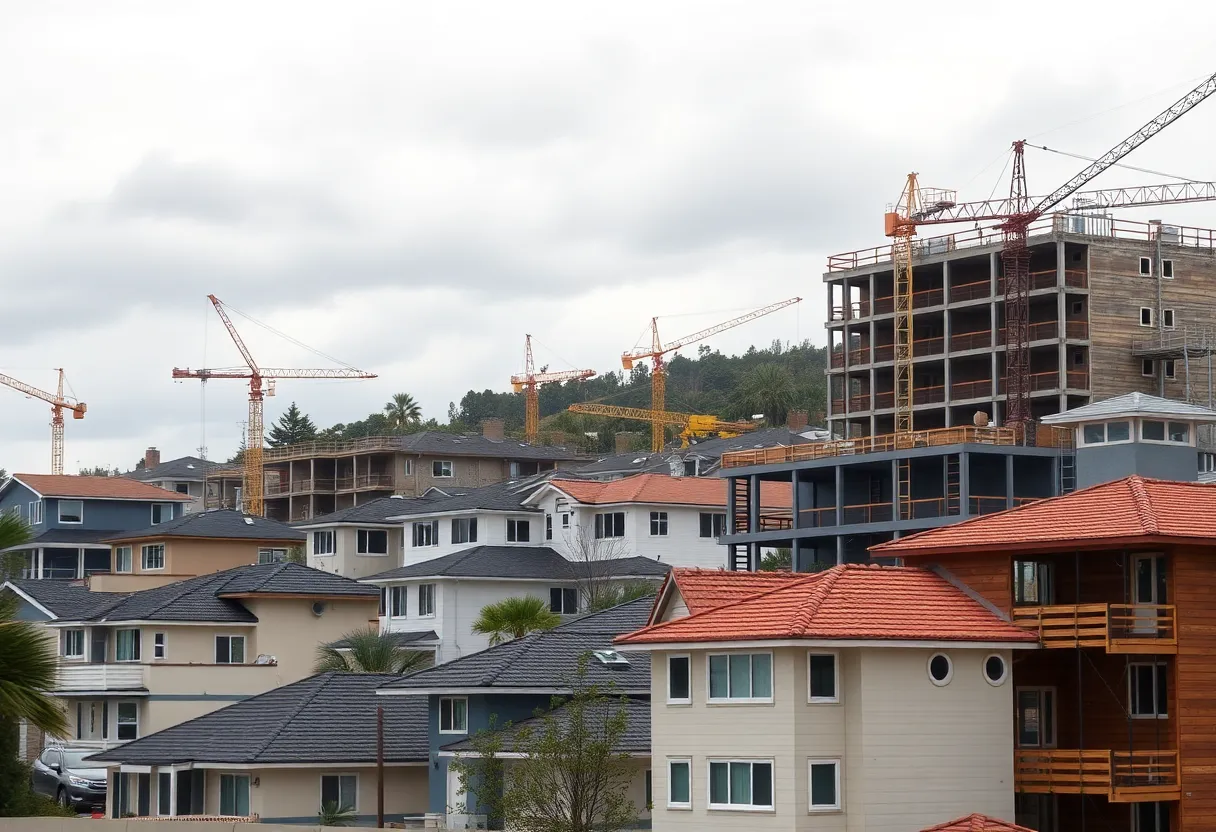News Summary
California’s recently enacted legislation AB 130 pauses state and local building code updates for six years, aiming to address the housing crisis. However, critics warn this freeze may compromise safety and sustainability standards, potentially hindering progress towards climate goals. Local governments now face restrictions on implementing more ambitious building codes, stirring debate among supporters and environmental advocates regarding housing affordability and energy efficiency. The long-term consequences of AB 130 reflect the complexities of managing California’s pressing construction needs alongside environmental objectives.
California’s AB 130 Halts Building Code Updates Amid Housing Crisis
In a significant move, California Governor Gavin Newsom recently signed into law AB 130, which aims to address the state’s ongoing housing crisis. This new legislation imposes a six-year pause on updates to state and local building codes, a decision that has drawn both interest and concern across various sectors.
Impact on Housing and Safety Standards
The delay on building code updates is controversial because building codes play a crucial role in ensuring the safety and energy efficiency of structures. Notably, buildings are responsible for a quarter of California’s carbon emissions, making it essential for updated building standards to be in place for effective decarbonization efforts. The pause means that developers may not be able to utilize the latest energy-efficient designs and technologies that help reduce greenhouse gas emissions.
All-Electric Homes and Current Trends
Under the latest energy code that will take effect on January 1, 2026, developers will be encouraged to build all-electric homes utilizing heat pumps and heat-pump water heaters. The California Energy Commission revealed that 80% of utility line extension requests in 2023 were for electric-only services, signifying a shift in how energy is consumed in residential areas. Moreover, 74 local governments across California have already adopted reach codes promoting all-electric new construction, showcasing a growing commitment to sustainability.
Limitations Imposed by AB 130
AB 130 restricts local jurisdictions from implementing their own ambitious building standards after an October 1 deadline. This pause on updates may hinder progress in many communities striving to enhance their building regulations in line with environmental goals. However, the law does allow for exceptions, permitting local governments to update codes during emergencies to safeguard health and safety.
Exploring Alternatives Amidst Constraints
Some jurisdictions are finding ways to explore code updates that might replace outdated air conditioning systems with modern heat pumps while potentially falling under AB 130’s exemptions. This indicates that while the law imposes restrictions, efforts to modernize specific aspects of building codes could still be pursued within the defined framework.
Arguments For and Against AB 130
Proponents of AB 130 argue that the legislation will stabilize the housing market and tackle affordability challenges that many Californians face. Advocates believe that suspending building code updates will create more opportunities for housing construction, thus responding to the pressing demand for affordable living spaces.
Conversely, critics—particularly those from environmental groups—believe that freezing code updates will impede progress on climate objectives and emission reductions. Historical data shows that waiving building codes does not typically lead to lower housing costs, as evidenced by a 2015 study from UCLA. Additionally, robust building codes have consistently delivered significant energy savings for residents, amounting to over $100 billion in the past fifty years.
Financial Implications of the Pause
A 2019 analysis indicated that constructing all-electric homes generally costs between $3,000 and $10,000 less than building homes with traditional gas connections. The anticipated pause on building code updates could lead to tens of millions of dollars in lost utility savings for households that would benefit from more energy-efficient designs.
Future Steps and Ongoing Developments
Legislative supporters, including assembly leaders, view this pause as a necessary step to address high housing costs and instabilities within the construction market. In the coming months, negotiations are expected to focus on additional funding and legislative measures that could promote electrification and sustainability beyond the restrictions imposed by AB 130.
As local governments prepare to navigate the implications of this new law, the implementation and effects of AB 130 will be closely monitored. Stakeholders across California are bracing for potential strategies that will allow for the advancement of housing construction while addressing environmental and safety standards.
Deeper Dive: News & Info About This Topic
Additional Resources
- Canary Media: California’s AB 130 Stalls Building Code Updates Amid Housing Crisis
- Politico: Housing Dividing California Democrats Over Newsom’s Approach
- Los Angeles Times: The Most Substantial Change to California’s Building Laws in Generations
- National Law Review: California Construction Employers May Rely on Legal Exemption to Drug Test for Marijuana
- BAM Law: California Construction Company Faced Labor Law Violation Allegations
Author: Construction CA News
The CALIFORNIA STAFF WRITER represents the experienced team at constructioncanews.com, your go-to source for actionable local news and information in California and beyond. Specializing in "news you can use," we cover essential topics like product reviews for personal and business needs, local business directories, politics, real estate trends, neighborhood insights, and state news affecting the area—with deep expertise drawn from years of dedicated reporting and strong community input, including local press releases and business updates. We deliver top reporting on high-value events such as the Rose Parade, Coachella, Comic-Con, and the California State Fair. Our coverage extends to key organizations like the California Building Industry Association and Associated General Contractors of California, plus leading businesses in technology and entertainment that power the local economy such as Apple and Alphabet. As part of the broader network, including constructionnynews.com, constructiontxnews.com, and constructionflnews.com, we provide comprehensive, credible insights into the dynamic landscape across multiple states.




